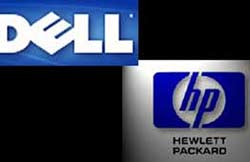Whether by chance or design, officials from HP and Dell – two fierce competitors in the personal computer market – outlined their future roadmaps on the same day, May 15.
 |
|
Dell’s acquisition of Alienware highlights that high-end, powerful multimedia computers are one of the company’s main strategic directions moving forward. Source: Gizmodo |
What remains unclear, whether by chance or design, is that these two roadmaps appear to be very different.
While Dell focuses on capturing the lead in product sales volume, HP promotes narrower market segments such as printers and corporate data center management.
Despite their differing goals, both companies will continue to sell a significant number of computers in the near future.
Supercomputers
During a technology seminar in San Diego, Michael Dell – the chairman and founder of Dell – emphasized that selling user devices (such as premium computer monitors or powerful multimedia machines capable of handling music, images, and television) is Dell’s future.
Dell painted a near-future scenario where every employee uses multiple computer monitors simultaneously (similar to Bill Gates), resulting in a noticeable increase in productivity.
In Dell’s view, gamers – not scientists – represent the largest customer base for supercomputers. This market is evolving rapidly and is difficult to predict, but Dell believes that the number of gamers upgrading their computers will continue to rise in the coming time.
Data Centers
In stark contrast, during an interview with Reuters at the seminar, HP’s Senior Vice President, Dick Lampman, focused solely on projects related to system management and software. He is also the head of HP’s research department.
Lampman affirmed that data centers are one of HP’s main initiatives for the next five years. Going beyond individual computers, data center management encompasses software, energy consumption, and human resources.
“Today’s data centers still rely too much on human intervention. Many tasks should be handled by machines instead“, Lampman stated.
“With HP’s new management technology, system operators will no longer need to run around, typing long strings of characters or punctuation marks to reset the phone system.”
Lampman’s vision is that HP’s software will enable corporate data centers to operate efficiently and easily, much like telecommunications coordination centers.
Another goal that HP is particularly focused on is reducing energy consumption – an issue the company describes as “the painful sore of every business,” especially with skyrocketing fuel prices recently.
Opposite Situations
 |
|
Source: ECT |
In the market, both companies face opposing situations. While investors penalize Dell for its sluggish growth rate, HP is praised for the aggressive cost-cutting measures implemented by new CEO Mark Hurd.
Since the beginning of 2005, HP’s stock price has risen nearly 54%, while Dell’s has dropped by 40%.
Dell is expected to announce its latest quarterly financial results next Thursday. However, last week, the company warned of lower-than-expected revenues.
“We used to earn three times more than our competitors, but now it’s only 2.5 times. I underestimated the growth rate of some companies“, Dell remarked, seemingly acknowledging that Hurd’s recent efforts are indeed yielding results.
For his part, Lampman stated that HP is striving to move beyond being merely a device manufacturer. The company’s acquisition of the photo service Snapfish.com last year clearly demonstrates HP’s expansion plans in the printing business moving forward.
Destiny


















































